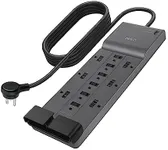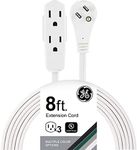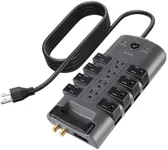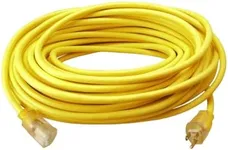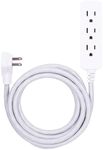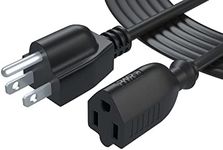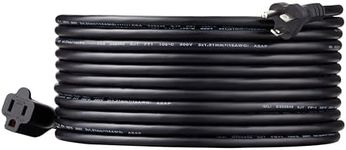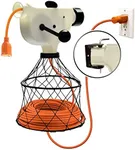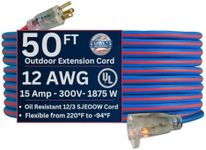Buying Guide for the Best Extension Cords
Choosing the right extension cord is crucial for safety and efficiency. Extension cords come in various lengths, gauges, and types, and selecting the right one depends on your specific needs. Understanding the key specifications will help you make an informed decision and ensure that the extension cord you choose is suitable for the intended use, whether it's for indoor or outdoor applications, light or heavy-duty tasks.LengthThe length of an extension cord determines how far it can reach from the power source to the device you need to power. This is important because using a cord that is too short can be inconvenient, while one that is too long can be cumbersome and may cause voltage drop. Extension cords typically range from a few feet to over 100 feet. For indoor use, a shorter cord (up to 25 feet) is usually sufficient. For outdoor use or larger areas, you might need a longer cord (50 feet or more). Choose a length that provides enough reach without excess slack.
Gauge (AWG)The gauge of an extension cord, measured in American Wire Gauge (AWG), indicates the thickness of the wire inside the cord. This is important because a lower gauge number means a thicker wire, which can handle more electrical current and reduce the risk of overheating. Common gauges for extension cords are 16, 14, and 12 AWG. For light-duty tasks like powering small appliances or lamps, a 16 AWG cord is usually sufficient. For medium-duty tasks like power tools, a 14 AWG cord is better. For heavy-duty tasks like large power tools or multiple devices, a 12 AWG cord is recommended. Choose the gauge based on the power requirements of the devices you plan to use.
Amperage RatingThe amperage rating of an extension cord indicates the maximum amount of electrical current it can safely carry. This is important because using a cord with a lower amperage rating than required can cause overheating and potential fire hazards. Extension cords typically have ratings of 10, 13, 15, or 20 amps. For light-duty use, a 10-amp cord is usually sufficient. For medium-duty use, a 13-amp cord is better. For heavy-duty use, a 15-amp or 20-amp cord is recommended. Check the power requirements of your devices and choose an extension cord with an appropriate amperage rating.
Indoor vs. Outdoor UseExtension cords are designed for either indoor or outdoor use, and it's important to choose the right type for your needs. Indoor extension cords are typically lighter and less durable, while outdoor extension cords are made with tougher materials to withstand weather conditions and rough handling. Outdoor cords are usually marked with a 'W' on the packaging. If you need an extension cord for outdoor use, make sure it is rated for outdoor use to ensure safety and durability. For indoor use, an indoor-rated cord is sufficient.
Plug TypeThe plug type of an extension cord refers to the design of the plug and the number of prongs. This is important because it determines compatibility with your outlets and devices. Most extension cords have a standard two-prong or three-prong plug. Three-prong plugs include a grounding prong, which provides extra safety by reducing the risk of electric shock. If your devices have three-prong plugs, make sure to choose an extension cord with a three-prong plug. For devices with two-prong plugs, a two-prong extension cord is sufficient.
Safety FeaturesSafety features in extension cords can include things like surge protection, GFCI (Ground Fault Circuit Interrupter), and built-in circuit breakers. These features are important because they provide additional protection against electrical hazards. Surge protection helps protect your devices from power surges, while GFCI can prevent electric shock in wet or damp conditions. Built-in circuit breakers can prevent overheating by cutting off power if the cord becomes overloaded. Consider the environment and potential risks where you will be using the extension cord and choose one with appropriate safety features.
